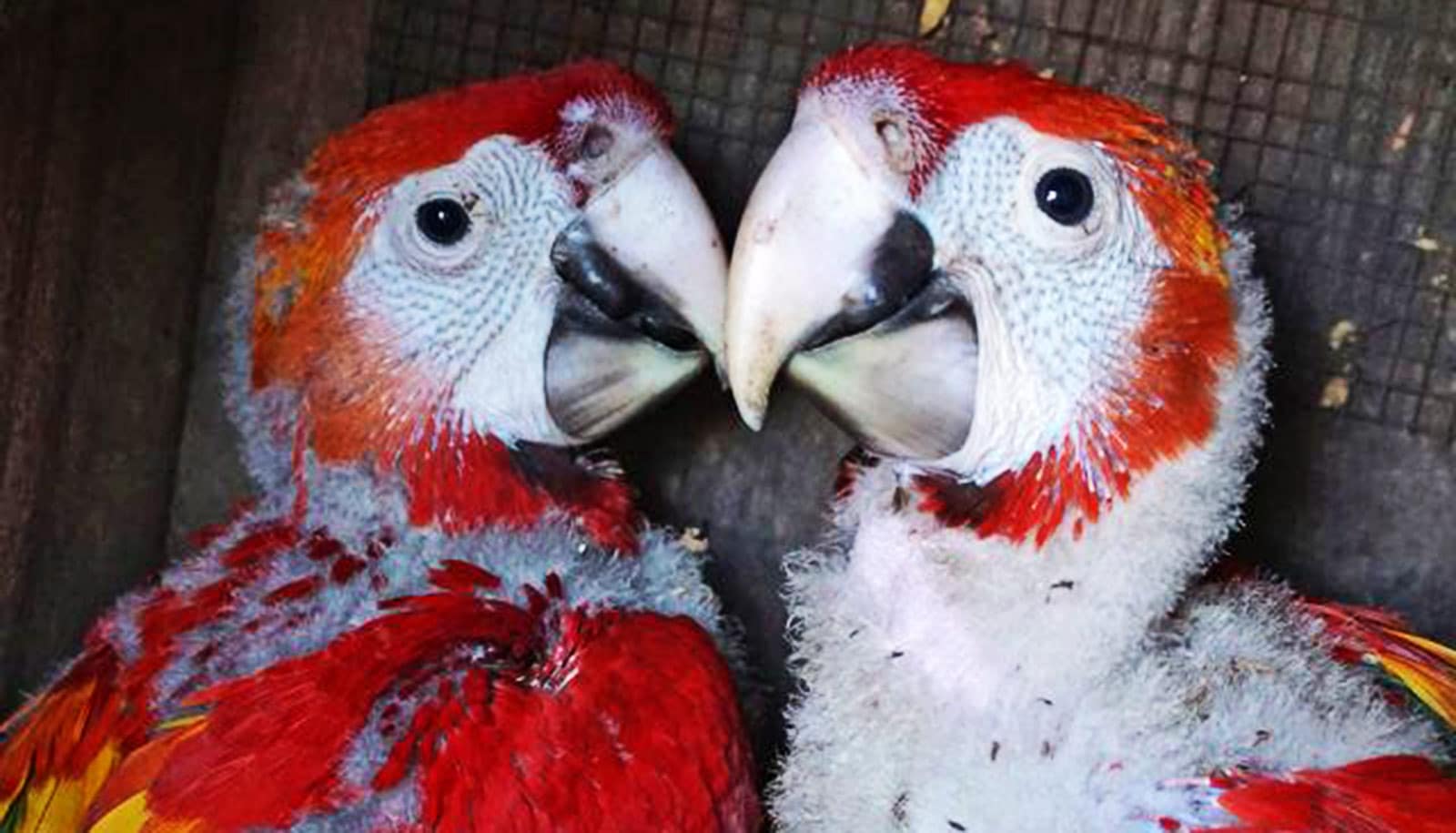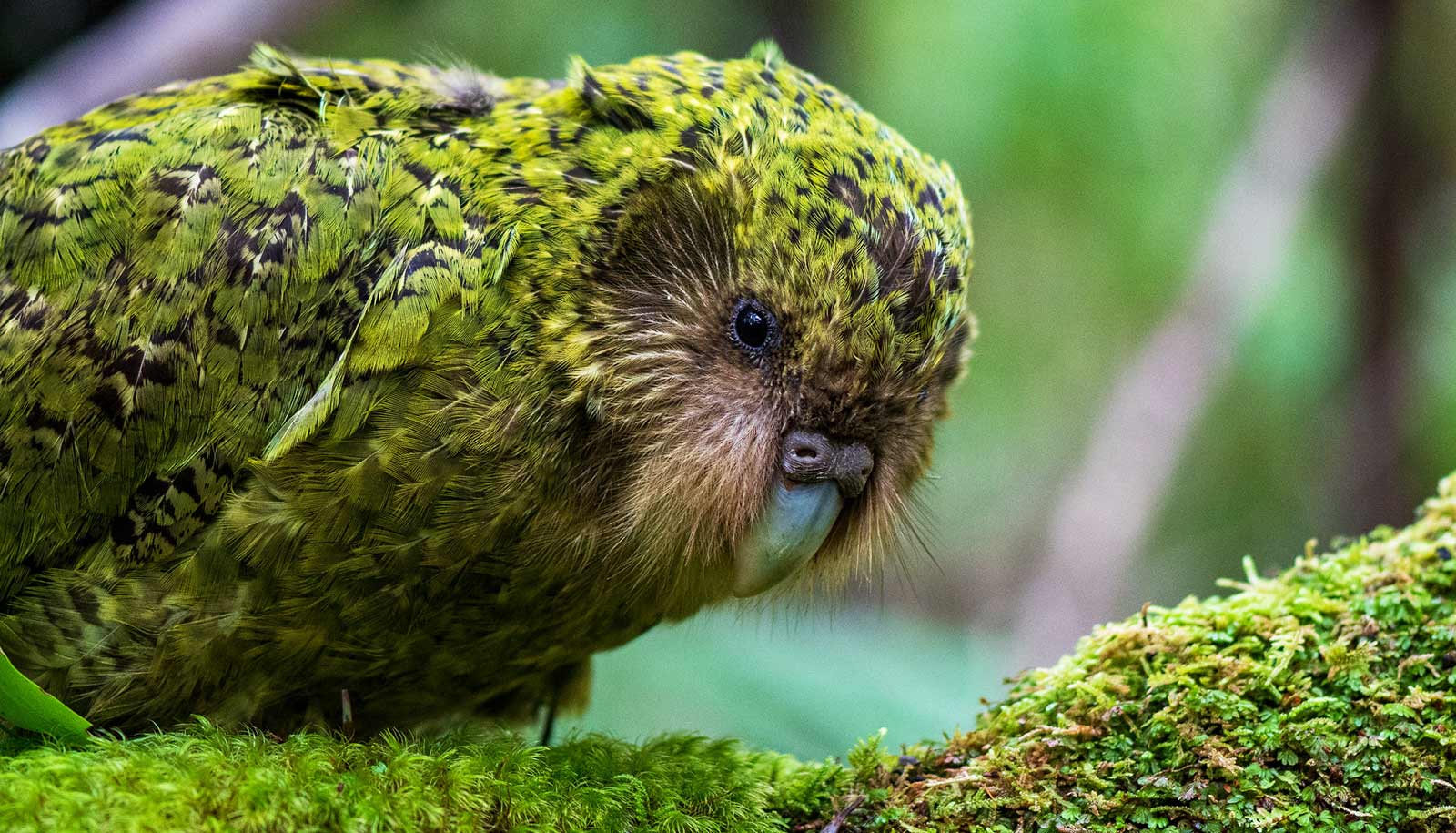A foster system can successfully fledge scarlet macaw chicks that would normally die, an experiment shows.
Gabriela Vigo-Trauco, a postdoctoral research associate at the Texas A&M University Collge of Veterinary Medicine& Biomedical Sciences and co-director of The Macaw Society, has spent the past decade studying scarlet macaws’ nesting behavior and refining a new system for introducing chicks to foster parents.
Vigo-Trauco’s interest in macaws began as a young child, but her interest in the survival of macaw chicks, specifically, began during her last year of college at the Universidad Nacional Agraria La Molina in Lima, Peru.
“I started studying the behavior of macaws in Tambopata and saw that they don’t feed all of their chicks the same amount of food and that they don’t give them the same amount of parental care. They would favor the first chick, give less to the second one, and pretty much ignore the third and fourth,” Vigo-Trauco says. “This created a brood in which the first chick survived to fledge, the second one died sometimes, and the third and fourth ones never survived.”
“In normal conditions, that chick would have died, but after I placed it back in a nest, it survived to fledge.”
Vigo-Trauco and collaborators report their work in the journal Diversity.
“My big question was, ‘For those chicks being discarded by nature, how can I recover them and put them back in the population to try to increase the macaws’ numbers?'” she says.
She began her work by installing cameras in human-made macaw nesting boxes to monitor the macaws’ interactions with their chicks.
After determining that a lack of food was not the cause of the birds’ behavior, Vigo-Trauco realized that as the time between when the first and second chicks hatched grew longer, it became less likely that the parents would care for the chicks equally.
Building off a study that took place Guatemala, she developed the idea of removing the second chicks from their nests and giving them to a different set of macaw parents that would be willing to care for them, either because they lost their own chicks to predation, poachers, or natural factors or because their chicks were already grown enough to need less care.
“When the second chick hatches four days after the first, it was more than 80% likely to die of starvation,” she says. “I would collect these chicks and raise them in our research center for 22 days or until they opened their eyes. Then, we placed them in different nests. In normal conditions, that chick would have died, but after I placed it back in a nest, it survived to fledge.”
Vigo-Trauco recalls initially being nervous that the foster parents would ignore or even attack the new chick. But by the end of the project, her team placed 28 chicks into new nests and saw every one accepted by its foster parents.
“I was not ready for such a great acceptance,” she says. “If it had been over 50%, I would have been super happy and said that the technique had potential. But our report was so good that it was a really big, happy success.”
Determining the details of this technique took years of research and trial and error, plus input from avian experts.
It also required an army of “guacamayeros,” or macaw assistants, to help with climbing trees, nest observations, and working with the chicks.
“We integrated three separate fields—parrot ecology, avian veterinary medicine, and aviculture (the breeding of birds)—to come up with little tricks to make the techniques work better in the field,” Vigo-Trauco says. “It was really interesting because when you are trained in parrot ecology, you are trained to watch, let nature be, and take notes, but a veterinarian is trained to act and try to save the chicks. With the integration of the three fields, we came up with a really nice plan.
“As an example, because the aviculture people knew it would take time for a chick that had been hand-raised to learn how to beg for food, we decided that we would give the chicks supplemental food for their first 10 days in the foster nest,” she says.
Once the foster parents accepted the scarlet macaw chicks, they were raised with the same care and attention as the parents’ birth chicks. While a few chicks died from external causes (predation and lightning), all of the other foster chicks went on to fledge and fly free with their foster parents.
Source: Megan Myers for Texas A&M University



